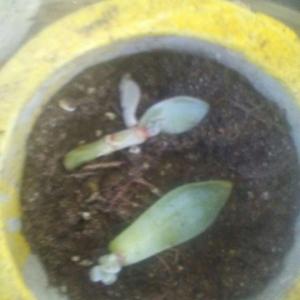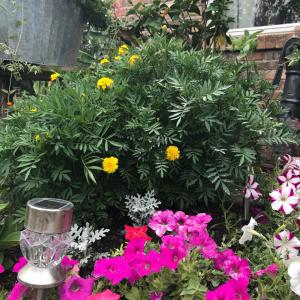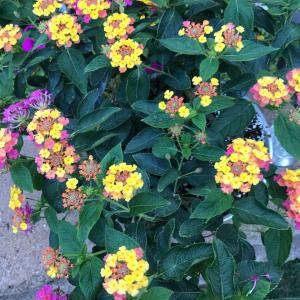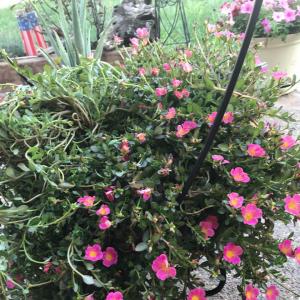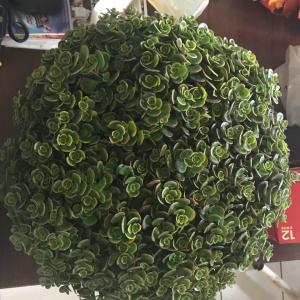文章
Dummer. ゛☀
2017年09月19日

Succulents are among the easiest plants to propagate, largely because the plants have a strong sense of self-preservation. The drought tolerant plants root with little encouragement from you, and new plants can be grown from existing ones. You even can ignore the cuttings for weeks and the plants will be fine.
Gardening trends come and go, but the popularity of succulents has been going strong for quite some time. It’s understandable. They require little supplemental water and they endure with benign neglect. They can be grown indoors if you have sufficient light, and can be used as temporary decor, such as for place settings, and then added to your collection.
The plants also can be quite beautiful, and their unique sizes, colors and forms make them a favorite.
General Care
Knowing how much to water your succulents is mostly trial and error. Most die from getting too much water, but if you notice the bottom leaves on the plant starting to shrivel, that’s a sign the plant isn’t getting enough water. Allow soil to dry between waterings.
Some succulents need full sun to develop color, but most appreciate some afternoon shade. If there are wide spaces between leaves, the plant isn’t getting enough light. Burns on the leaves may indicate it is getting too much sun.
Many succulents are frost tender. During the winter, you can bring them indoors or place them beneath a tree or close to the house to help protect them. Covering them with protective cloth or placing old-fashioned Christmas lights around them can help them survive freezing temperatures.
Succulents grow well in pots, but they’ll do even better in the ground if you have the right soil. They need soil that drains well, and that’s not most of our clay soils. You can amend your soil to make it more friable by adding sand and compost. Create your own soil for pots by combining perlite and sand with standard potting soil.
All plants need fertilizer, especially those in pots, but they will survive without it. They may not be as robust, but they will survive.
If you’re worried about certain plants being lost in the winter frost, take cuttings from the plant in the fall and grow them plants indoor until spring. You may lose your outdoor plant, but you’ll have something to replace it.
Propagation
Most succulents can be propagated through cuttings or leaves.
For cuttings, simply snip off a piece of the plant and set it aside in a shady place. Let it rest for a couple of days to harden off, allowing the freshly cut end to callous over. Then pop it in a pot or the ground and water. Cuttings can be left for a couple of weeks before planting.
To grow from leaves, remove the entire leaf and set aside in a shady spot. In about three weeks, roots will form on the leaf and a new plant will develop at the base.
Succulents can be rooted in water, but most will rot rather than develop roots. As they are so easy to root out of water, there’s not anything to be gained.

Gardening trends come and go, but the popularity of succulents has been going strong for quite some time. It’s understandable. They require little supplemental water and they endure with benign neglect. They can be grown indoors if you have sufficient light, and can be used as temporary decor, such as for place settings, and then added to your collection.
The plants also can be quite beautiful, and their unique sizes, colors and forms make them a favorite.

General Care
Knowing how much to water your succulents is mostly trial and error. Most die from getting too much water, but if you notice the bottom leaves on the plant starting to shrivel, that’s a sign the plant isn’t getting enough water. Allow soil to dry between waterings.
Some succulents need full sun to develop color, but most appreciate some afternoon shade. If there are wide spaces between leaves, the plant isn’t getting enough light. Burns on the leaves may indicate it is getting too much sun.

Many succulents are frost tender. During the winter, you can bring them indoors or place them beneath a tree or close to the house to help protect them. Covering them with protective cloth or placing old-fashioned Christmas lights around them can help them survive freezing temperatures.
Succulents grow well in pots, but they’ll do even better in the ground if you have the right soil. They need soil that drains well, and that’s not most of our clay soils. You can amend your soil to make it more friable by adding sand and compost. Create your own soil for pots by combining perlite and sand with standard potting soil.

All plants need fertilizer, especially those in pots, but they will survive without it. They may not be as robust, but they will survive.
If you’re worried about certain plants being lost in the winter frost, take cuttings from the plant in the fall and grow them plants indoor until spring. You may lose your outdoor plant, but you’ll have something to replace it.

Propagation
Most succulents can be propagated through cuttings or leaves.
For cuttings, simply snip off a piece of the plant and set it aside in a shady place. Let it rest for a couple of days to harden off, allowing the freshly cut end to callous over. Then pop it in a pot or the ground and water. Cuttings can be left for a couple of weeks before planting.
To grow from leaves, remove the entire leaf and set aside in a shady spot. In about three weeks, roots will form on the leaf and a new plant will develop at the base.

Succulents can be rooted in water, but most will rot rather than develop roots. As they are so easy to root out of water, there’s not anything to be gained.
0
2
文章
Dummer. ゛☀
2017年09月19日

Succulents are undoubtedly growing in popularity. They come in dozens of varieties, boasting different colors and shapes that can be mixed and matched to create a centerpiece or other decorations in the home. If you’re new to gardening or have had bad luck with houseplants in the past, try your hand at caring for succulents indoors.
Succulents are grown outdoors but are brought indoors during the winter months. It’s possible to grow succulents indoors year-round, though. You may be familiar with some types of succulents, like Aloe vera, Jade Plant and Snake Plant.
Environment
While succulents can also be placed outdoors during the growing season, keep them indoors in a bright, sunny location, like a south-facing or west-facing window.
Most succulents thrive if the relative humidity of the house is between 10 and 30 percent. Keep succulents away from drafty locations.
Light
Rely on natural lighting if possible when growing succulents indoors.
You can use artificial lighting, like a cool white fluorescent tube, in place of natural light if necessary, or in combination with natural light. If you’re using cool white fluorescent tubes, keep them 6 to 12 inches (15 to 30 cm) above succulents, and keep them on for 12 to 16 hours each day.
Soil
Plant succulents in well-draining, sandy soil. Cornell Cooperative Extension suggests planting succulents in two parts garden soil, two parts sharp builders soil and one part peat. Or, you can use a combination of one part potting soil and one part coarse sand, as recommended by Minnesota State University Extension. Soil that doesn’t drain well may contribute to root and stem rot.
Consider planting succulents in porous containers with drainage holes, like unglazed terracotta or clay pots.
Watering
Succulents don’t require as much water as some other houseplants.
Water sparingly. Allow the soil to dry out completely before watering succulents. Allow water to drain out, then discard the excess water. If you water succulents too much, the stems and roots may rot and the leaves will drop. Succulent leaves will wilt if you haven’t watered enough.
Avoid watering in frequent, small amounts. This can affect growth by making plants sickly and by causing roots to become weak and shallow. Also, be careful not to water too much during winter, which is the dormant period for succulents.
Fertilizer
Succulents can be fertilized with houseplant food that’s diluted to half its recommended rate. The houseplant food should be higher in phosphorus than nitrogen.
During the growing season, fertilize succulents once or twice a month.
Pest Control
Sometimes, succulents can become affected by mealybugs, scales and spider mites. To control mealybugs and scales, soak cotton swabs in rubbing alcohol and dab the plant. To control spider mites, spray succulents with insecticidal soaps.

Succulents are grown outdoors but are brought indoors during the winter months. It’s possible to grow succulents indoors year-round, though. You may be familiar with some types of succulents, like Aloe vera, Jade Plant and Snake Plant.

Environment
While succulents can also be placed outdoors during the growing season, keep them indoors in a bright, sunny location, like a south-facing or west-facing window.
Most succulents thrive if the relative humidity of the house is between 10 and 30 percent. Keep succulents away from drafty locations.
Light
Rely on natural lighting if possible when growing succulents indoors.
You can use artificial lighting, like a cool white fluorescent tube, in place of natural light if necessary, or in combination with natural light. If you’re using cool white fluorescent tubes, keep them 6 to 12 inches (15 to 30 cm) above succulents, and keep them on for 12 to 16 hours each day.

Soil
Plant succulents in well-draining, sandy soil. Cornell Cooperative Extension suggests planting succulents in two parts garden soil, two parts sharp builders soil and one part peat. Or, you can use a combination of one part potting soil and one part coarse sand, as recommended by Minnesota State University Extension. Soil that doesn’t drain well may contribute to root and stem rot.

Consider planting succulents in porous containers with drainage holes, like unglazed terracotta or clay pots.
Watering
Succulents don’t require as much water as some other houseplants.
Water sparingly. Allow the soil to dry out completely before watering succulents. Allow water to drain out, then discard the excess water. If you water succulents too much, the stems and roots may rot and the leaves will drop. Succulent leaves will wilt if you haven’t watered enough.
Avoid watering in frequent, small amounts. This can affect growth by making plants sickly and by causing roots to become weak and shallow. Also, be careful not to water too much during winter, which is the dormant period for succulents.

Fertilizer
Succulents can be fertilized with houseplant food that’s diluted to half its recommended rate. The houseplant food should be higher in phosphorus than nitrogen.
During the growing season, fertilize succulents once or twice a month.

Pest Control
Sometimes, succulents can become affected by mealybugs, scales and spider mites. To control mealybugs and scales, soak cotton swabs in rubbing alcohol and dab the plant. To control spider mites, spray succulents with insecticidal soaps.
2
2



